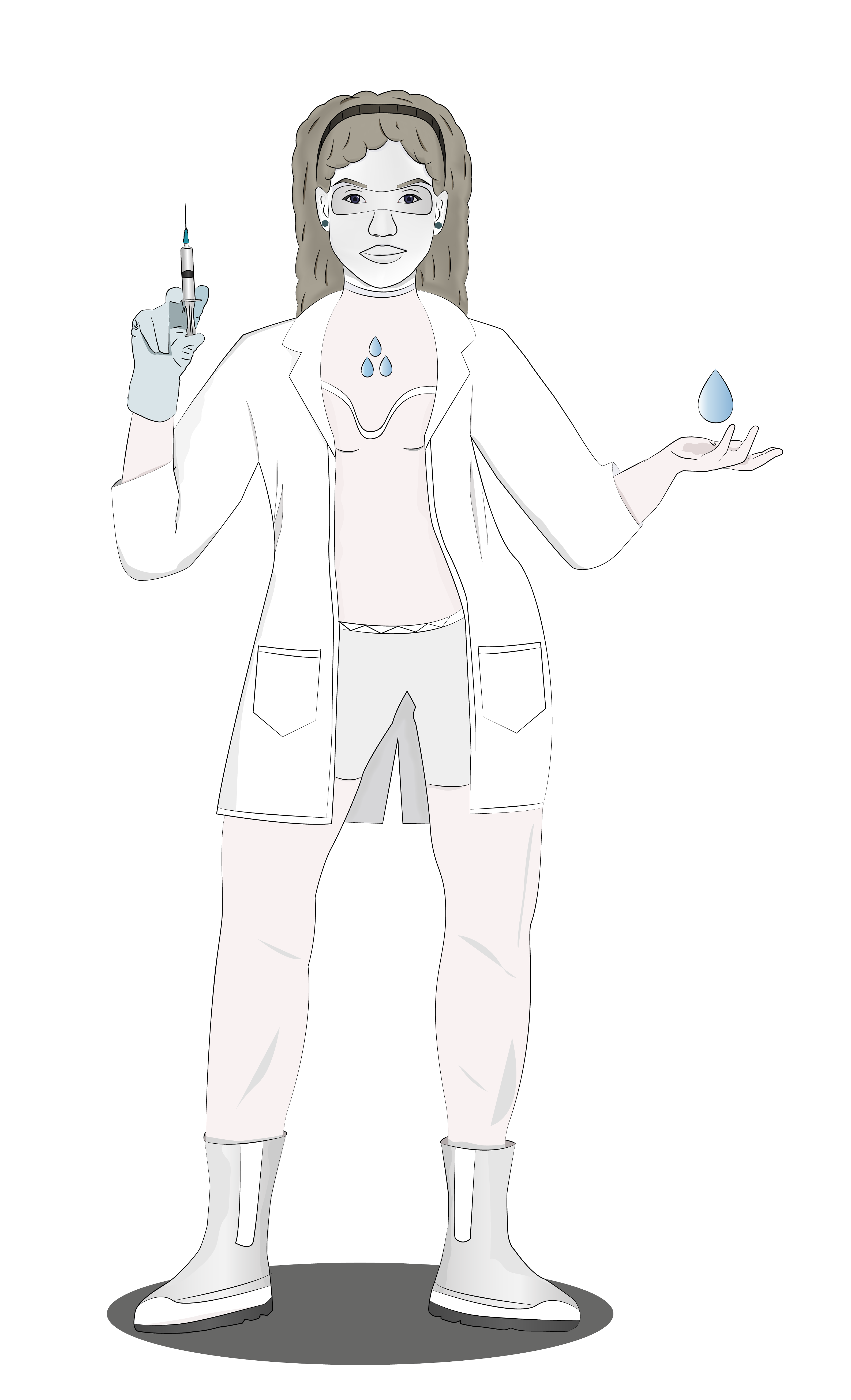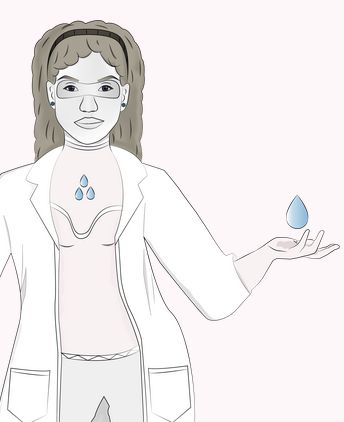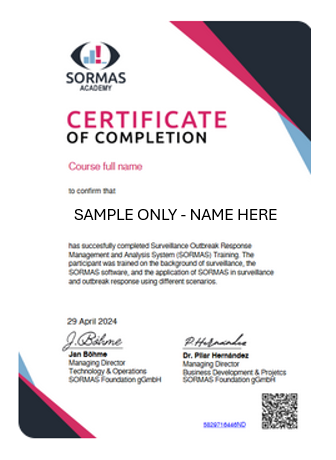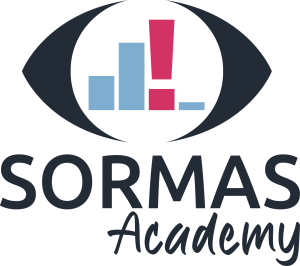Kursthemen
-

"Hello and welcome to your SORMAS Basics e-learning course!
I'm Dr Ominio, your guide on this journey"Over the next few weeks, I’ll be with you every step of the way, helping you navigate through the ins and outs of this powerful tool to detect and prevent disease outbreaks. Whether you're here for a refresher or you're just starting out, this course is designed to empower you with the knowledge and skills to make a difference in the world of public health.
Don't worry if you can't complete it all at once; you can pause and resume whenever you're ready. There is a course index to help you find each section (look on the left side of this page). So grab your smartphone or laptop, and let’s dive into the world of SORMAS, where data drives action, and every click can contribute to saving lives.
Text- und Medienfeld: 2 Textseite: 1 -
In this section we will explain what SORMAS is and how a team of health professionals can use this digital platform. The following stories and videos provide an overview and then describe each role in more depth. Eventually, you will only need to focus on one role only, however we want you know how the whole team is benefitting from your efforts. SORMAS needs a team where everyone has different skills, like studying disease outbreaks, collecting and working with data, talking to people in the field, and understanding technology. This diversity of skills and abilities helps the team handle health emergencies better and work together smoothly.
Text- und Medienfeld: 1 Textseiten: 6 -
 "The whole team is busily collecting and updating information so we can see real-time analytics of the health of our communithy and individuals."
"The whole team is busily collecting and updating information so we can see real-time analytics of the health of our communithy and individuals." 
As we move forward into the next section of our course, we'll delve into the heart of SORMAS—the Dashboard. Through detailed, step-by-step guides, you'll learn how to navigate the Dashboard effectively, making it a powerful tool in our efforts to manage and respond to health issues. There are three dashboard views: Surveillance, Contacts and Samples.Each one offers an overview with charts, maps and summaries.You will learn how to use filters and interactive elements to drill down and group data.You will need a few hours to practice these new skills.
Embrace this opportunity to enhance your skills; each step you take is a step toward mastery of a tool that saves lives every day. This knowledge isn't just empowering—it's essential for making a tangible difference in public health. So, let's get started and unlock the full potential of SORMAS together!
Textseiten: 4 H5P: 4 Text- und Medienfeld: 1 -
 "Each person in SORMAS is part of the puzzle. Let's see how we carefully record their information"
"Each person in SORMAS is part of the puzzle. Let's see how we carefully record their information"
Welcome to the "Persons" section of our SORMAS e-learning course. This module is designed to familiarize you with the intricacies of managing individual profiles within SORMAS. Here, you will learn how to navigate through the complexities of handling personal data tied to cases, contacts, and events, ensuring that every interaction is recorded and managed with precision and respect for privacy.
The Person module in SORMAS acts as a central database where every individual associated with any health event is recorded uniquely. Please note that we use the term 'persons' rather than people intentionally as we are discussing details about each person. Understanding how to effectively manage this data is crucial for maintaining the integrity of health records and ensuring efficient follow-up and contact tracing.
As a key player in this process, your role involves attention to detail and a commitment to safeguarding personal and public health data. This section will guide you through accessing, filtering, and managing personal information within SORMAS, providing you with the tools needed to perform your duties effectively.
You are not just managing data; you are ensuring that each person's health journey is accurately documented and respected, making you a guardian of both individual and public health. This responsibility may seem daunting, but with the right training and commitment, you can excel in this role, making a significant impact on the public health landscape.
Let's embark on this educational journey together, where your dedication to learning and excellence sets the foundation for mastering the management of personal data within SORMAS. Your hard work and practice in this area are not only crucial for your professional development but are also vital in the fight against disease outbreaks and in promoting health and safety in your community.
-
 "The main piece of this puzzle is a Case. Let's explore how SORMAS collects information about each case"
"The main piece of this puzzle is a Case. Let's explore how SORMAS collects information about each case" 
As we transition into the next section, you will learn how to navigate and use the SORMAS Case Directory effectively. A case of a disease, syndrome, or health condition is determined by a set of standard clinical, laboratory, and epidemiological criteria called case definitions. Cases are generally classified into three categories:
Understanding cases in SORMAS with its comprehensive insights will empower you to make informed decisions and effectively manage cases. You'll learn how to interact with the data, from basic navigation to performing advanced functions like using detailed filter options. This knowledge is not just about handling data—it’s about being part of the frontline defense against public health threats.
As you proceed, remember that each piece of data you manage through SORMAS plays a significant role in shaping public health responses. This is your opportunity to master a tool that directly contributes to safeguarding communities and managing public health more efficiently. So, stay curious, stay engaged, and let’s delve into the intricacies of SORMAS with the goal of making a tangible impact in the world of public health.
Textseiten: 2 Text- und Medienfeld: 1 H5P: 4 -
 " If we work together, we can break chains of transmission!"
" If we work together, we can break chains of transmission!"
Welcome to the "Contacts" section of our SORMAS e-learning course, where you will learn the essential elements of managing contact situations within the SORMAS platform. A contact is an exposure of a non infected person (contact person) to an infected person (case person). These exposures can include: face-to-face contact with a case person, direct physical contact with a case person, or other settings as indicated by local risk assessments.
An important and indispensable strategy for controlling the spread of an infectious disease outbreaks is contact tracing. However, in order to reap the full benefit of contact tracing, it has to be systematically applied. Contact tracing involves three sequential activities viz.
✔️ Contact identification,
✔️ Contact listing and classification,
✔️ Contact follow-up (monitoring for disease onset).
This module is designed to provide you with a comprehensive understanding of how SORMAS handles contacts, ensuring precise epidemiological documentation that is crucial in controlling the spread of diseases. In this section, you will discover how SORMAS creates and manages multiple contact situations for the same individual when they are involved in various contact scenarios. This approach allows for detailed tracking and management of each contact scenario independently, enhancing the accuracy and effectiveness of disease surveillance efforts.
You will learn how to navigate the Contact Directory, where all contact situations are listed. This directory is your gateway to viewing, sorting, and managing contact information efficiently. With the ability to filter and export data similar to the case directory, you will gain skills that are vital for any health professional working in disease control.
But this journey isn't just about mastering a tool—it's about becoming part of a greater team. Each of us plays a pivotal role, and together, we form a powerful force in the fight against disease outbreaks. By learning to effectively manage contacts, you become a hero in the narrative of public health, directly contributing to the safety and well-being of communities. Together, we can achieve more and emerge victorious in our collective mission to safeguard public health.
Textseite: 1 Text- und Medienfeld: 1 H5P: 4 -
 "We must be united and organised to understand how this disease can be stopped! Are you with me?"
"We must be united and organised to understand how this disease can be stopped! Are you with me?"
Welcome to the "Tasks" section of our SORMAS e-learning course, where you'll harness the power of effective task management.Tasks are like to-do list items that are assigned to health workers or officials. This section is dedicated to empowering you as the hero in the ongoing mission to enhance public health response through diligent work, consistent follow-ups, and practice needed to master SORMAS.
In SORMAS, a "task" refers to a specific job or activity that needs to be completed as part of managing and controlling disease outbreaks. Here’s how tasks work in SORMAS:
✔️Assigned Jobs: Each task has a specific goal, like checking on a person who might be sick, collecting samples for testing, or following up with people who have been in contact with an infected person.
✔️Tracking and Organization: Tasks help keep everything organized and ensure that nothing important is missed during an outbreak. They help manage the workload by assigning specific duties to different team members.
✔️Updates and Monitoring: Each task can be updated with new information as it is completed. For example, a health worker can note whether a patient has been seen, what the symptoms are, and what steps are next.
✔️Prioritization and Scheduling: Tasks can be prioritized based on their urgency. This helps health workers know which actions to take first, especially when dealing with many cases or a fast-moving outbreak.
Overall, tasks in SORMAS are crucial for managing public health activities efficiently, ensuring that every important action is planned, tracked, and executed properly. Embrace the challenge of becoming a skilled operative in the public health arena. Each task you undertake and complete not only contributes to your personal growth but also fortifies the collective effort against health crises. In this section, you'll learn how to create, manage, and modify tasks effectively, turning each action into a stepping stone towards excellence in health management.
Let's gear up to dive into the intricacies of task management with SORMAS. Remember, every task completed is a testament to your commitment and a critical contribution to the broader goal of safeguarding community health. You are the backbone of this endeavor, and together, we can achieve remarkable outcomes in the fight against diseases. So, let's move forward with determination and transform every challenge into an opportunity to excel.
Textseite: 1 Text- und Medienfeld: 1 H5P: 4 -
 "Join our heroic team committed to safeguarding public health through proactive event surveillance and management."
"Join our heroic team committed to safeguarding public health through proactive event surveillance and management." 
In SORMAS, an "event" refers to any situation or gathering where there might be a risk of disease spreading. Here’s what this means:
✔️ Gatherings or Incidents: An event can be something like a concert, a festival, a wedding, or even a smaller gathering like a family reunion.✔️Tracking Disease Spread: Events are important to track because they can help health officials understand how diseases are spreading. If someone at an event gets sick, knowing about the event helps trace who else might have been exposed.
✔️Preventative Action: By identifying and monitoring these events, health workers can take steps to prevent further spread of the disease. This might include reaching out to attendees, providing them with information, or advising them on what to do if they feel sick.
✔️Data Collection: SORMAS keeps a record of all events related to health incidents. This information helps build a clearer picture of where diseases are occurring and how they are moving through communities.
In this module, you'll gain the skills to handle complex scenarios where multiple event participants are involved, ensuring that each step you take contributes to the containment and resolution of public health threats. The ability to associate documents, and specify event locations will empower you to tailor your approach to each unique situation, enhancing your ability to respond effectively.
Overall, an event in SORMAS is any situation where people gather and there is a potential for health risks. Tracking these events helps manage and control outbreaks more effectively.
Your role is crucial. Each event you manage and each decision you make can have far-reaching impacts on public health outcomes. This section is designed not just to teach you the functionalities of managing events in SORMAS but to inspire you to embrace the hard work, follow-up, and practice required to excel in this field.
As you progress, remember that mastering these tools is part of your journey to becoming a skilled guardian of public health. Your dedication to learning and applying these principles will prepare you to take on any challenge with confidence. Let's embark on this journey together, committed to excellence and ready to make a significant impact in the world of health surveillance.
Textseite: 1 Text- und Medienfeld: 1 H5P: 4 -

"Each member of our team has a valuable and unique role. I want to show you how people use SORMAS in various roles"
Now that you have an understanding of the basics of SORMAS we invite you to login to the demo site as different role in the team. Watch these videos and imagine where you could best contribute. Perhaps you wish to be a Lab Assistant, or perhaps a supervisor. We offer more training and support to keep on increasing your skills.
Text- und Medienfeld: 4 -
 "Earn your Digitial Certificate by completing the final test"
"Earn your Digitial Certificate by completing the final test"Complete each of the activites below under "Test your Knowledge" to finish this course.
If you created a free account we will know your name and whether you have successful completed the course. You will now be awarded a Digital Certificate of Completion acknowledging your readiness to contribute to global health surveillance efforts using SORMAS.
Before we do that, please kindly complete a short Course Evaluation so we can continue to improve this course.
When you have finished this section you can Claim your certificate.Text- und Medienfeld: 3 H5P: 13 Verzeichnis: 1 Feedback: 1


